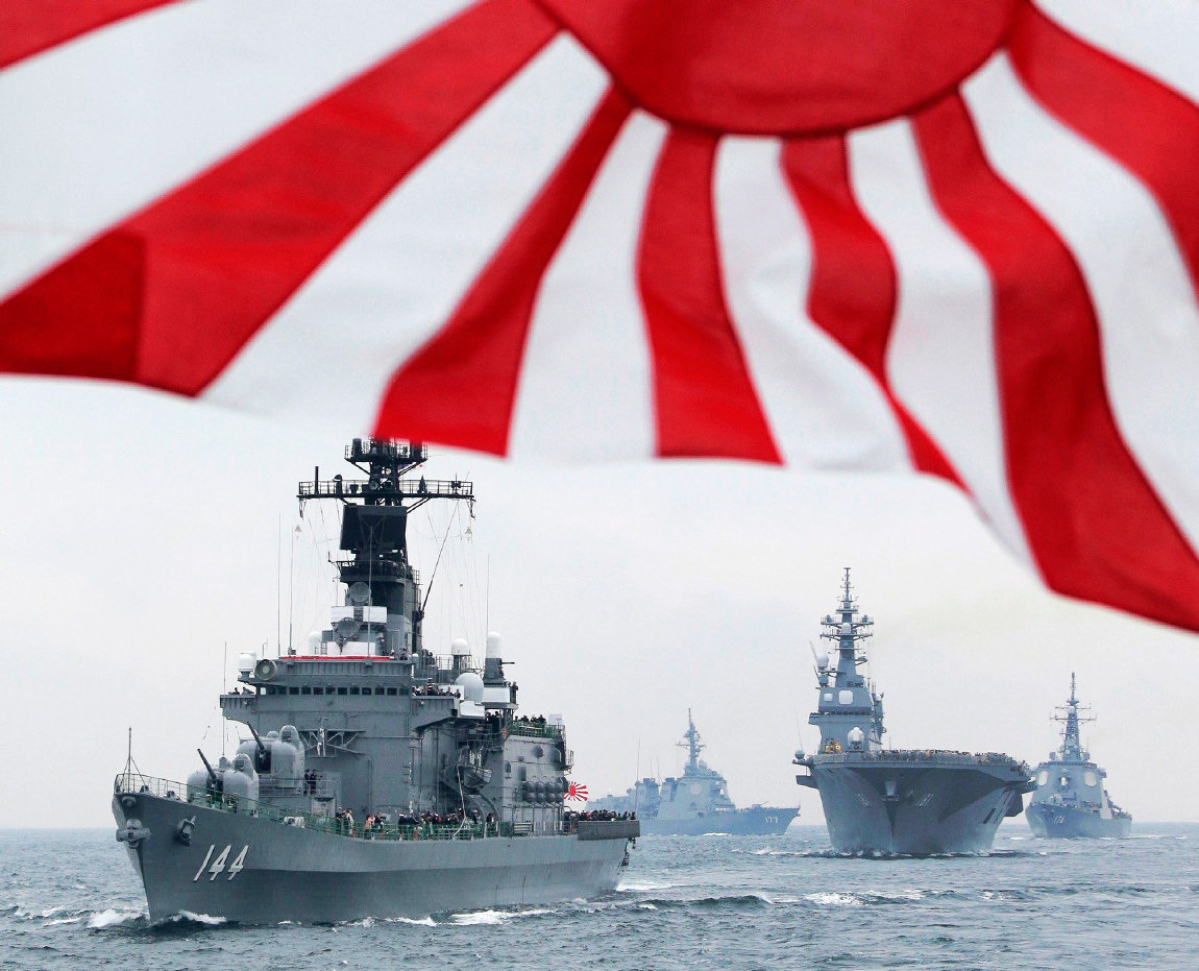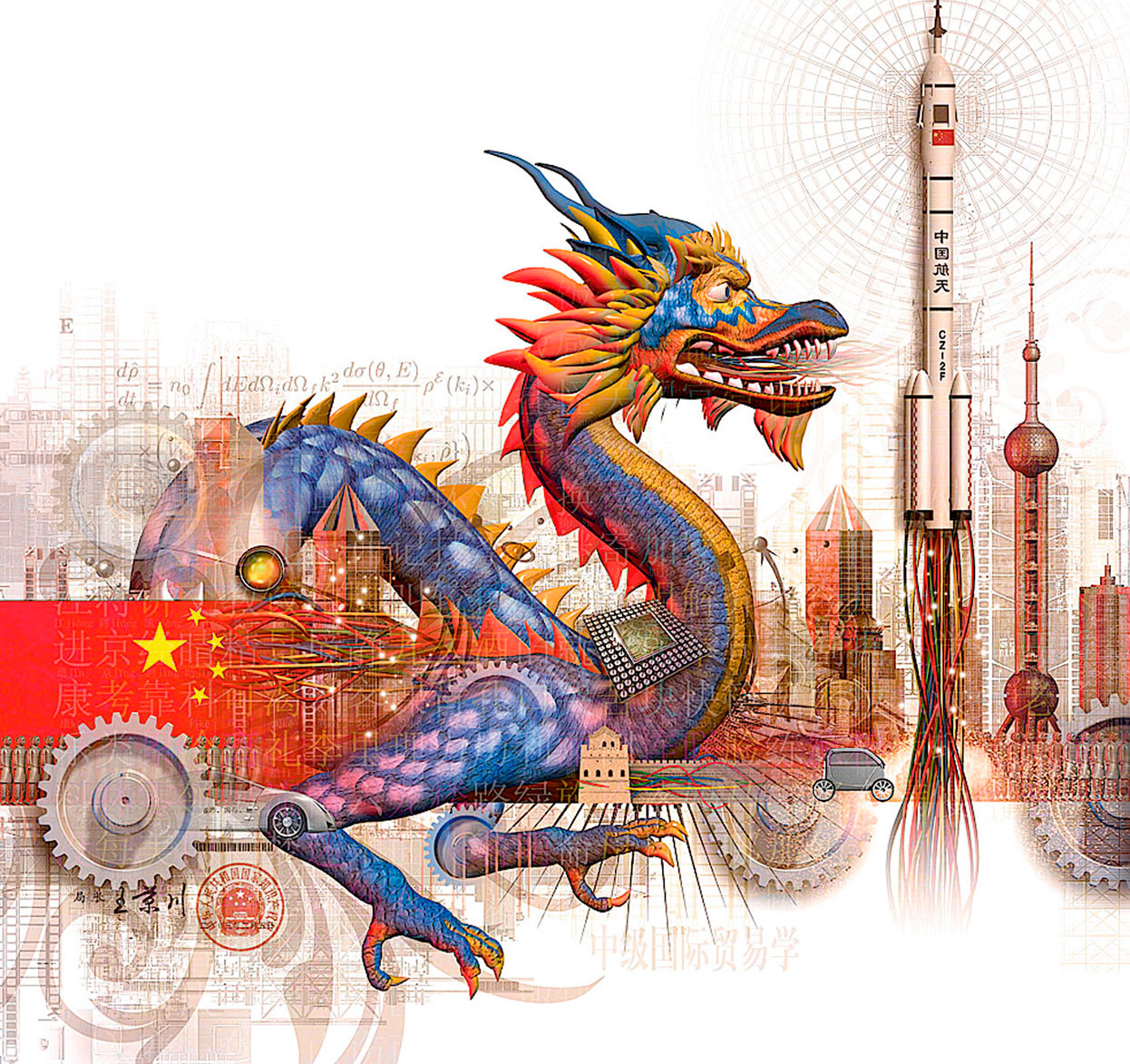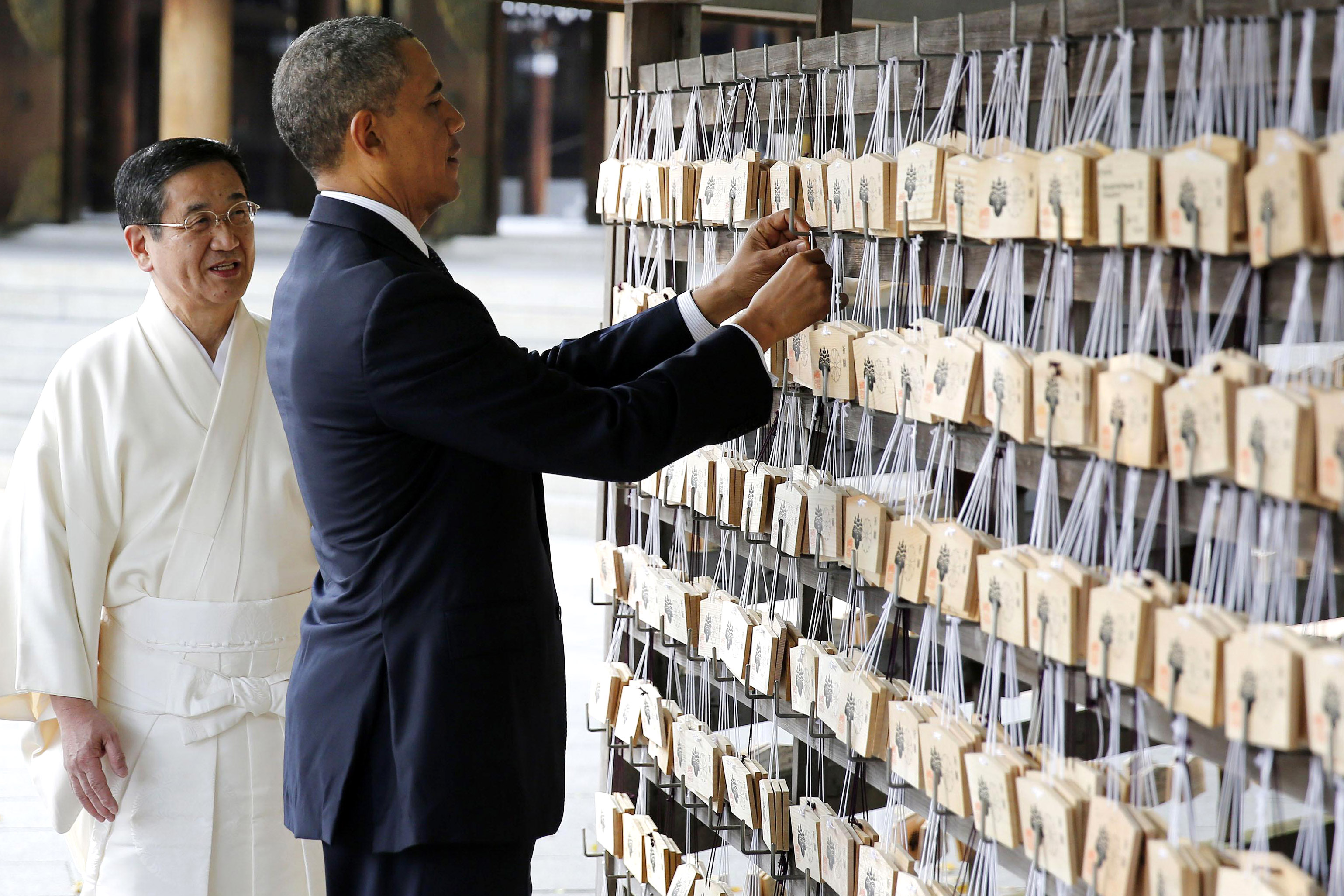Abe’s Search for Security
Shinzo Abe speaks during a news
conference at his official residence
in Tokyo May 15, 2014
In
Login if you are already registered
(no votes) |
(0 votes) |
MA, Edmund A. Walsh School of Foreign Service, Georgetown University
Japan’s New Defense Policy and the US-Japan Alliance.
Recently the world has witnessed a host of seminal changes in Japan’s defense and security policy. As part of this new trend, Japan and the United States are expected to revise the US-Japan Guidelines for Defense Cooperation by the end of this year. To assess the changes mentioned above and explain why Japan has embarked on this new and allegedly assertive course, one must look at both the external and internal factors behind Tokyo’s search for security. The forthcoming revision of the US-Japan Guidelines will show whether Japan is really determined to take its national security to a whole new level.
Japan’s New Defense Policy and the US-Japan Alliance
Since Prime Minister Shinzo Abe took office in December 2012, Japan has been making the headlines of world’s leading media with unprecedented frequency. Following the triumphant return of his Liberal Democratic Party (LDP) to power after more than three years in opposition, S. Abe has demonstrated a strong resolve in getting Japan back on track by implementing a host of bold new policies ranging from quantitative easing to structural reform. Among the prime minister’s top priorities, defense and security rank especially high. On the campaign trail, S. Abe pledged to take the nation’s security to a whole new level and has assiduously worked towards the implementation of this goal ever since. Under LDP leadership, Japan has adopted its first National Security Strategy, established a National Security Council modeled after that of the US, and engaged in a full-fledged discussion about the nation’s right to collective self-defense. With the US-Japan alliance at the core of Japan’s security policy, Washington and Tokyo are expected to revise one of the key documents governing the alliance—the US-Japan Guidelines for Defense Cooperation—by the end of 2014. This will become yet another decisive step towards S. Abe’s goal of making Japan’s security environment safe, stable, and predictable.
Despite the increased media attention, the driving forces behind the changes in Japan’s security and defense policies remain somewhat obscure. While many attribute these changes solely to the rise of China, others point to Japan’s potential hegemonic ambitions and S. Abe’s alleged nationalism as key factors conditioning Tokyo’s divergence from its erstwhile doctrine of international pacifism. It is obvious, however, that there is no simple explanation for this recent trend. What follows is an attempt to solve the puzzle and bring the rationale behind S. Abe’s new policies to light. Given the immense role the US-Japan alliance plays in the Asia-Pacific, the potential contents and implications of the forthcoming revision of the US-Japan Guidelines for Defense Cooperation will be addressed below as well.
S. Abe’s Ambitions: From ‘Reluctant Realism’ to Proactive Contribution to Peace
In his comprehensive study of the troubled history of Japan’s foreign relations, Kenneth Pyle has argued persuasively that throughout Japan’s modern history, its foreign policy has been shaped by the external environment to a surprisingly great extent.[1] Since the Meiji restoration, Japan has been so attuned to external shocks that it has consistently adapted its domestic institutions to the dominant trends of the time, let alone its foreign policy paradigm. Japan’s security policy is no exception. If one were asked to choose between the terms “proactive” and “reactive” to describe it, the latter would be the obvious choice. Indeed, Japan’s policies in the security domain have been mostly reactive in the sense that Tokyo has been repeatedly forced to adjust them in response to certain faits accomplis.
This almost paradoxical sensitivity to external factors justifies an examination of Japan’s foreign policy from a predominantly realist standpoint. In this light, S. Abe’s recent push for a more robust defense posture is best explained by changes in the regional balance of power that have taken place in the last two decades. Quite a broad term itself, the balance of power can be viewed as a set of key variables exerting great influence on Japan’s policy decisions. When one mentions power in an East Asian context, what first comes to mind is the rise of China, or rather its growing assertiveness in dealing with Japan and the whole region.
With the US-Japan alliance at the core of Japan’s security policy, Washington and Tokyo are expected to revise one of the key documents governing the alliance—the US-Japan Guidelines for Defense Cooperation—by the end of 2014.
Recently China has demonstrated an increased readiness to use coercion to achieve its foreign policy goals vis-à-vis Japan, while continuing to modernize its armed forces and steadily increasing its largely nontransparent military spending. Tokyo’s concerns over China’s growing military power are augmented by changes in Beijing’s overall rhetoric and foreign policy narrative. China’s domestic anti-Japanese sentiment is largely manipulated by the Chinese Communist Party and ominous, but even more so are President Xi Jinping’s pledges to realize the Chinese dream—the “great rejuvenation of the Chinese nation,” which may be seen as an inherently irredentist objective. Given Beijing’s incessant claims that the Senkaku/Diaoyu islands are China’s inalienable territory, the alarming number of incursions into Japan’s territorial waters and aerospace by Chinese government vessels coupled with the establishment of an Air Defense Identification Zone (ADIZ) in late 2013 have effectively convinced Tokyo of China’s unfriendly intentions.
Japan’s policies in the security domain have been mostly reactive in the sense that Tokyo has been repeatedly forced to adjust them in response to certain faits accomplis.
Japan’s concerns are reflected in the 2013 National Security Strategy (NSS), National Defense Program Guidelines (NDPG), and the Mid-Term Defense Program. The emphasis these documents place on building a “dynamic and integrated defense force” as well as the response to the so-called “gray zone” situations reveal Tokyo’s resolve to defend what it sees as its territory from a Chinese invasion.
However, two other key variables remain that have informed Tokyo’s new security thinking. The first is the ever-present threat posed by North Korea’s nuclear weapons and ballistic missiles, and its provocative and often openly hostile behavior. This threat is addressed in the NSS and NDPG, and the current debate in Japan concerning Ballistic Missile Defense and developing a preemptive strike capability is largely driven by it.
Another key factor shaping Japan’s security and defense policy is the state of the US-Japan alliance. For more than half a century the US has been the largest external balancer in Asia and Japan’s closest and only military ally. Against the backdrop of China’s rise and its increasingly assertive behavior, Japan has required constant reaffirmation by the United States of its security assurances. At the same time, Washington has indicated that it will no longer tolerate freeriding. In the heyday of the Cold War Japan relegated the task of national defense to the United States, but now that the bipolar order is no more, American policymakers have pushed Japan to share the burden. Institutional constraints imposed by the Japanese constitution have been the main impediment to burden-sharing, so Prime Minister S. Abe is currently trying to consolidate his domestic support in order to change the interpretation of the constitution to recognize the nation’s right to collective self-defense.
Yet, the realist balance of power argument alone does not suffice to explain the rationale behind Japan’s search for security. A deeper look at the rhetoric of Japan’s leadership and the content of the domestic policy debate reveals a profound ideational shift taking place in Japanese policy thinking. During the Cold War, Japan conducted its foreign policy based on the mercantile Yoshida Doctrine, essentially a principle of freeriding on American defense guarantees in order to ensure Japan’s own security. Under this doctrine, a certain liberal mentality was constructed in the Japanese policy-making community.[2] A staunch belief existed that Japan’s economic leverage—not its military power—should be the primary instrument of diplomacy. This principle worked perfectly in the Cold War setting, but as soon as bipolarity vanished, Japan found itself in a state of deep crisis. This forced Japan to undergo a shift from mercantile liberalism to “reluctant realism,” a term so aptly coined by Michael Green.[3] Japan had embarked on a journey towards “normalcy,” faced with the painful realization that the mercantile pacifism of the Yoshida Doctrine could no longer ensure the nation’s security.
Given Japan’s deep anxiety over the possibility of China seizing the Senkaku/Diaoyu islands, Tokyo will seek to include the concept of “gray zone” situations into the revised Guidelines.
S. Abe’s realism, on the other hand, does not come off as hesitant. The principle of proactive contribution to peace, which S. Abe’s cabinet has incorporated into Japan’s first National Security Strategy, is essentially a call for Japan to become a “normal” nation capable of shaping its own security environment. Following prime ministers Y. Nakasone and J. Koizumi, S. Abe is the third post-war Japanese leader to argue for decisively eschewing the antiquated Yoshida-style pacifism. S. Abe’s fervor and his admitted charisma often cause Japan-watchers and policy pundits to accuse him of nationalism and even revisionism. It is clear, though, that Japan’s new security policy is not simply a product of its leader’s nationalistic aspirations but a result of a long and painful transition from the Cold War international order that Japan embarked upon so belatedly.
Guidelines Revision and Challenges to Alliance Management
The realist variables discussed above will condition the revision of the US-Japan Guidelines for Defense Cooperation that is expected to take place by the end of 2014. The original purpose of the Guidelines is to define the division of labor within the US-Japan alliance and put forth the common principles that govern it. The current version of the document was adopted in 1997 as a result of a major effort to revitalize the alliance following the publication of the 1995 Nye report. Yet, the 1997 Guidelines no longer capture some of the essential security concerns of both allies.
Given Japan’s deep anxiety over the possibility of China seizing the Senkaku/Diaoyu islands, Tokyo will seek to include the concept of “gray zone” situations into the revised Guidelines. A Sino-Japanese clash over the disputed rocks is a perfect example of a “gray zone” defined in the NSS as a “situation concerning territorial sovereignty and interests that are neither pure peacetime nor emergencies.” Japan’s lack of amphibious warfare capabilities, a strong conventional deterrent, and relevant combat experience renders its Self-Defense Forces (SDF) largely unprepared to defend and recapture offshore islands on their own. It is obvious, however, that neither Japan nor the US wish to get involved in an armed clash, let alone a full scale military conflict, with China. Hence, it is reasonable to expect the revised Guidelines to include provisions concerning risk reduction and conflict de-escalation measures.[4] Since “gray zone” situations take very little time to escalate, a clear-cut set of principles for cooperation and joint operations will be required for the alliance to respond seamlessly and effectively to such contingencies. Some have even suggested that “to deal with gray-zone crises, the alliance [will require] a permanent body for operational cooperation.”
Washington has been pushing Japan to contribute more to the alliance, but Japan’s constitution has prevented it from becoming an equal partner of the US. Now Washington expects S. Abe to change the interpretation of the pacifist constitution to recognize Japan’s right to collective self-defense.
The North Korean threat will also inform discussions concerning the revision of the Guidelines. It will affect primarily the provisions dealing with Ballistic Missile Defense (BMD), and it is thought that the US hopes to have broader discussions with Japan regarding the concrete parameters of BMD cooperation.[5] At the same time, since the Guidelines deal primarily with the principles of defense cooperation and the division of labor within the alliance, the revised version is unlikely to include detailed provisions regarding the allies’ BMD posture.[6]
The primary concern of the US will center on the issue of burden-sharing. Washington has been pushing Japan to contribute more to the alliance, but Japan’s constitution has prevented it from becoming an equal partner of the US. Now Washington expects S. Abe to change the interpretation of the pacifist constitution to recognize Japan’s right to collective self-defense. According to Article 51 of the UN Charter, every country is entitled to this right, but the current interpretation of the Japanese constitution does not acknowledge it. Therefore, in a hypothetical situation when an ally of Japan suffered an attack, the SDF has no right to interfere and provide assistance. This understanding was a part of the mercantile Yoshida Doctrine, but after the infamous failure of the so-called checkbook diplomacy in the midst of the first Gulf War, Japan realized it needed to bid farewell to the policy of freeriding. Since then the scope of the U.S.-Japan alliance has been broadened and Japan has been making growing contributions to the maintenance of international peace and stability. However, it is still severely constrained by the constitutional interpretation. While the Koizumi government attempted to overcome these constraints by adopting ad hoc legislation such as the PKO laws, the S. Abe cabinet decided to move towards a revision of the constitutional interpretation.
Since assuming office, the prime minister has taken decisive steps to realize this objective: he appointed a new pro-revision Head of the Cabinet Legislation Bureau, initiated discussions involving public intellectuals and LDP Diet members, and has now entered into consultations with the Kōmeitō, the LDP’s coalition partner. So far the Kōmeitō has adamantly opposed a reinterpretation of the constitution, with some party members going as far as admitting the possibility of leaving the coalition. Moreover, the influential Kōchikai faction of the LDP has also been circumspect in supporting S. Abe. While the Cabinet does not require the Diet’s assent to reinterpret the constitution, S. Abe will need to amend some two dozen pieces of legislation lest the new interpretation remain a mere piece of paper.
The US views changing the constitutional interpretation as a precondition for revising the 1997 Guidelines. Given the lack of cohesion within the LDP-Kōmeitō coalition and the dissenting voices in the ruling party itself, the prospects of the Guidelines being revised by the end of this year seem bleak. At the same time, the revision of the Guidelines may become a touchstone to test S. Abe’s commitment to his new policies as well as the scope of the ideational change that seems to have occurred in Tokyo. If he manages to successfully strike a balancing act between Japan’s interests and American demands, Japan-watchers will have even more reasons to conclude that Tokyo’s realism has turned from reluctant to proactive. A failure to do so, on the other hand, will bode ill for the very future of the US-Japan alliance.
Instead of a Conclusion: Whither Reluctant Realism?
Since the Yoshida doctrine began to crumble in the early 1990s, Japanese foreign policy thinking has largely remained in a state of disarray. As LDP Secretary General Shigeru Ishiba pointed out, “in the post-Cold war era, distinguishing between friends and foes has become increasingly difficult.” Given Japan’s sensitivity to the external environment, Ishiba’s remarks indicate how hard it must have been for Tokyo to adapt to the challenges of the post-Cold War world order. With S. Abe’s return to power, the situation has changed. Japan’s reluctant shift towards realism has culminated in a score of new security and defense policies designed to turn Japan into a proactive member of the international community capable of shaping its own security environment. While these policies are still driven by changes in the balance of power, behind them looms a profound change in Japan’s foreign policy paradigm. The revision of the Guidelines for US-Japan Defense Cooperation will test S. Abe’s commitment to his new vision, but the overall trend of Japan parting with the past seems irreversible.
If the constitution is successfully reinterpreted and the Guidelines are revised to take into account both allies’ concerns discussed above, the strengthened US-Japan alliance will greatly contribute to deterrence vis-à-vis China. With America’s backing, Tokyo will continue to implement the provisions of the 2013 defense documents by developing a comprehensive off-shore island defense posture, which will make any potential Chinese aggression futile by the end of this decade. Japan and the US will achieve greater interoperability and force readiness, with Tokyo’s own role within the alliance gradually expanding. Recognizing Japan’s right to collective self-defense will allow it to participate more actively in the maintenance of international peace and contribute more to the alliance, a development which will undoubtedly be welcomed in Washington. At the same time, Japan will remain constrained by its constitution in many respects and one should not expect the SDF to participate in US-led combat operations in the near future. Furthermore, to realize the principle of proactive contribution to peace at the regional level, Japan will need to reassure its closest neighbors of its benign intensions. While the Southeast Asian states are not as sensitive to S. Abe’s newfound “assertiveness,” South Korea and China remain wary of his new policies. Mending ties with these countries should become a central issue for Tokyo’s diplomacy in the years to come.
The topic merits adducing a few remarks for Russia to consider. The discourse regarding Japan’s changing role in Asia’s security has not figured prominently in major Russian media, not to mention academic and policy circles. Russia envisions itself as, among other things, an East Asian power, but these claims do not pass a reality check. Apart from its natural resources, Russia does not possess the military, economic or cultural leverage sufficient to affect the state of affairs in East Asia. At the same time, President Putin’s alleged decision to “pivot” eastward, albeit by simply supplying gas to China, presents Russia with a host of opportunities.
To exert influence in East Asia, Russia will need to maintain constructive relations with all key regional powers. It is important not to take the Russo-Chinese rapprochement in directions that may antagonize Japan, which is very sensitive to shifts in the balance of power and threats. Furthermore, the Kremlin’s domestic ideology notwithstanding, it is imperative that Russia does not get involved in the convoluted history problem that has affected Sino-Japanese relations for decades. In this light, a statement issued by President Putin and President Xi saying that “Russia and China will hold joint events to celebrate 70 years of victory over German fascism and Japanese militarism in the European and Asian theaters of World War II” is alarming. Russia’s leadership should bear in mind that a new bloc confrontation in East Asia is decidedly not in Russia’s national interests.
The Russo-Japanese relationship, therefore, should be managed in a cautious and skillful fashion. The overall insipid tone the Chairman of the State Duma Sergey Naryshkin adopted on his visit to Tokyo in early June 2014 was in no way conducive to diplomacy. His tepid response to Yoshiro Mori, Japan’s former prime minister and the leading “Russia hand” in the LDP who invited Vladimir Putin to attend a sambo competition in Japan (a de facto state visit invitation), was by and large a diplomatic blunder. Despite being one of the three countries that maintain a two-plus-two security dialogue with Japan (the other two are the US and Australia), Russia does not seem to fully appreciate the opportunity to engage in such a dialogue with America’s largest and most important military ally in all of Asia. If Moscow wishes to become an actual East Asian power, it will have to manage its policy towards Japan more adroitly.
[1] Pyle, Kenneth B. 2007. Japan Rising: The Resurgence of Japanese Power and Purpose. New York: Public Affairs. See chapters 1 through 3 for an in-detail account of Pyle’s argument.
[2] The ideational aspects of Japanese foreign policy thinking are addressed in Self, Benjamin L. 2007. The Dragon’s Sgadow: The Rise of China and Japan’s New Nationalism. Washington D.C.: The Stimson Center.
[3] Green, Michael J. 2003. Japan’s Reluctant Realism: Foreign Policy Challenges in an Era of Uncertain Power. New York: Palgrave Macmillan.
[4] Sheila A. Smith, interview by author.
[5] Ibid.
[6] Yuki Tatsumi, interview by author.
(no votes) |
(0 votes) |







